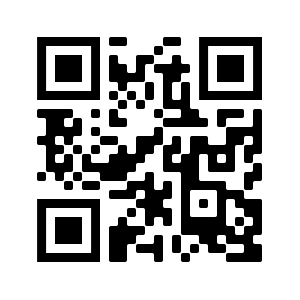When it comes to scan and go technology, there’s perhaps nothing more ubiquitous than QR codes. These blotches of squares exist in almost everywhere. In a business setting, QR codes can be used for authentication, to log into Wi-Fi networks, hold storefront payment information, and much more. They are also used to prevent forgery, increase product traceability, and calibrate an object’s position in augmented reality. During the pandemic, many restaurants have switched to using QR codes to direct diners to their online menus in order to reduce virus spread from touching physical menus.
A few other sectors that extensively use QR codes include:
- Education
- Medicine
- Logistics and transportation
- Warehousing
- Service
- E-commerce
And that’s by no means an exhaustive list.
QR code vs barcode
QR code stands for Quick Response code, and is a two-dimensional matrix barcode that stores information in a series of blocks. Invented in 1994 by the Japanese vehicle company Denso Wave to track auto parts, it has since become ubiquitous in almost all industry sectors.
Unlike a linear barcode that can only be read horizontally, a QR code contains information in two dimensions, allowing it to hold much more information than a standard barcode and be read in any orientation. A tiny square can store more than 4,000 characters of text or 7000 numbers, providing plenty of room to embed richer data such as code, instructions, website addresses, or an event ticket.
Technically, QR codes can be stored in any shape, but a square allows the camera to more easily recognize the code from awkward angles.

A QR code offers several auxiliary benefits over barcodes. Because the blocks are more visually distinct, it’s more resistant to blemishes and, as previously mentioned, can be scanned in any orientation. It also has error-correction capabilities that retain the message even if the code is partially damaged.
Whereas barcodes are scanned using a narrow beam laser, QR codes were designed to be scanned using image sensors. This means that any camera with the appropriate software can become a QR scanner. And nowadays, many QR code scanners can also read barcodes (one prime example is the Amazon app that scans barcodes to search for products on its store). There’s also a good chance that a modern smartphone’s default camera app can already scan QR codes, right out of the box. If not, users can choose from the hundreds of free options available in the Google Play Store and the Apple App Store.
Versions, modes and types
The International Standards Organization (ISO) created the ISO 18004 standard in 2000 to govern how QR codes work. Since then, the specification has undergone several revisions to expand its capabilities.
The input mode dictates the type of characters the code can store. There are four common input modes: numeric, alphanumeric, byte/binary, and Kanji. There’s also Hanzi for storing Chinese, although it’s not an official part of the ISO 18004 spec so some QR code readers may not recognize it. Certain input modes even allow multiple codes to be read together, further expanding their capacity.
The amount of data a QR code can hold is determined by its version. There are over forty code versions, each specifying how much data it can contain. Typically, the higher the QR code version, the more data it can store. What’s great is that the amount of data doesn’t affect the code’s physical dimensions; the encoding pattern inside just needs to increase in density. Of course, the denser, smaller dots require better cameras to read the code accurately. Versions 1 and 2, holding up to 47 characters, are the most common, but versions up to around seven, which can hold 224 characters, are also frequently used.
QR codes can be dynamic or static to suit their use cases. A static QR code can’t be altered once it’s created, making it a good option for business cards and contact information. A dynamic QR code can be altered after it’s been made, and is useful for holding website addresses, Wi-Fi logins, and information that needs to be regularly updated. A good rule of thumb is that if it’s printed, it’s static.
Visually, QR codes feature three distinct squares at the corners that act as positional markings. The dots and spaces inside contain not only the embedded data, but also details like format, error correction level, version information and orientation marker.
Is it secure?
The technology behind QR codes is secure; a code can’t be changed once it’s been generated. Anyone can generate a QR code in seconds using the plethora of available services, and as long as the code follows the ISO standard, it doesn’t require licensing.
Of course, its accessibility also means anyone can embed a malicious piece of code, create a QR code, glue it over a printed legitimate QR code and wreak havoc. That QR code can then instruct the user’s device to download malware or direct them to spoofed websites to steal their personal information. A prominent attack happened in late January, when the FBI warned that criminals were using malicious QR codes to steal website login credentials and financial info.
Unfortunately, there isn’t a way to vet a QR code visually. After all, they all look like blotches to the human eye. To minimize risks of becoming the victim of a cyberattack, only scan codes from trusted senders and be wary of codes posted in public spaces. Most QR scanners today provide a preview of the embedded information. It’s a good idea to review them carefully.
